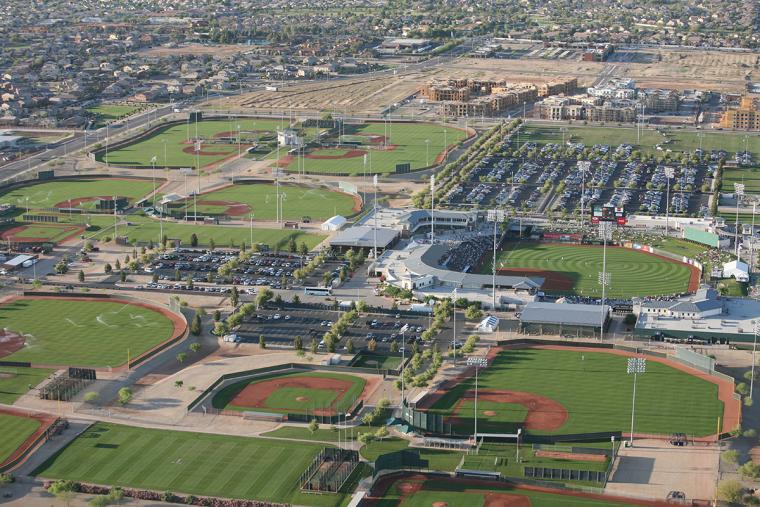

If you’re a newer rights holder, it can be tough to claim a coveted spot in one of the nation’s biggest, best, and newest sports tourism destinations. With their reputations and multi-million-dollar properties on the line, operators are looking for that sure thing when it comes to hosting quality and safe events that will bring thousands of people (and far more dollars) to their city.
Speed Dating Success
New and emerging events rights holders and destinations alike often find benefit from the “speed-dating” format of many of the industry’s annual conferences such as the National Association of Sports Commission (NASC). Whether it’s an official 10-minute meeting appointment or a chance encounter during one of the after-hours social activities, these conferences offer a plethora of opportunities to make connections with other rights holders and potential host destinations as well as industry vendors and service providers. Before you go, prepare for the event by gathering your list of ‘must-haves,’ key dates, marketing materials and stats about your event. Use these to identify points of negotiation.
Make a Commitment
It doesn’t have to be a lifetime commitment, but a multi-year or multi-event contract can really turn up the heat in the negotiation process. Facilities are looking to find events that are in growth mode and looking to establish long-term relationships. Multi-year contracts and extensions provide benefits for both parties such as:
• Ease in forecasting revenue/expense streams
• Greater leverage in long-term promotion of the event(s)
• Increased flexibility of rate structure
• Additional ancillary sales opportunities
Communication is Key
As with any relationship, communication is the key to long-term success. Facility owners may have a laundry list of questions and qualifications that need to be addressed before they’re ready to put your event on the books. Rights holders can be ready by preparing key data about their events prior to a meeting or phone call with the facility to make the conversation go smooth. Here are just a few examples of questions you may be asked during that process.
• How well established is your event?
• Where has your event been held in the past?
• How much inventory have you needed and how many teams/participants have you had?
• What are your spectator numbers expected to be?
• How much participation are you expecting for the event you are booking?
• Are you expecting heavy use of concession stands and other amenities?
• What is the format of the event/tournament?
• What references can you provide for your event?
For facilities and destinations, pre- meeting preparation can be equally as helpful. A rights holder will want to know the sizes and specifications of the facility, in-facility and local food options, lodging accommodations, parking proximity and capacity, as well as local activities available for adults and families. They want to know their players, coaches, and fans are going to have a great time both in the facility during the event and outside of it when the games are done. They may also want to ask about local transportation options to these attractions.

Holiday and seasonal weekends, (springs and summer Saturdays) can be especially hot dates for indoor facility bookings. We’ve seen multi-purpose facilities get booked up months in advance. Demand for dates can even occur before a facility opens to the public; we’ve seen that recently with the Rocky Mount Event Center. Event rights holders, event planners and concert promoters are all vying for the same space and the same peak times. Well-known facilities in popular destinations may even be booked years in advance by their most trusted content providers.
By ‘stretching’ the season, many event rights holders will find they can book a premium venue on a non-premium weekend on the shoulder of their sports season. Even shifting the date of your event a few weeks can raise the likelihood the facility will be available. It may also carry with it significant savings in rental fees as facilities look to book dates in their non-prime times. The fact that you can get your event into the facility also means you can create a relationship there – and the next time you come back, you may find it easier to work with the venue and put on your event – that long-term relationship discussed earlier.
Share the Love
Facilities are able to be more flexible on rental rates, when event rights holders bring ancillary revenue opportunities to the table. Hotel rebates, parking fees, retail/merchandise sales and entertainment, as well as food and beverage, are some of the most common ways to bring shared revenue into contract negotiations. Rights holders may be able to negotiate a lower rental rate by revenue sharing in these ancillary services.
Content providers who are willing to collaborate on the scheduling and format of the tournament to optimize spectator and athlete stay in the facility are preferred by operators. Too much time between games or matches is a missed opportunity for facility food and beverage sales because players and guests leave for lunch, dinner or breaks. On the other hand, too little downtime also has its disadvantages because visitors aren’t able to enjoy and spend on the ancillary services the facility provides, like a family entertainment component. Work with your venue and your attendees to provide a schedule that allows them to enjoy the area for a little while; it may pay dividends when they decide to book a longer stay the next time they’re in town.
Play It Safe
Safety is priority number-one in every venue our company manages, and it should be that way for every destination. Player, coach, official and fan safety are never up for negotiation. Each party should have a clear understanding of the insurance and risk management policies and requirements during the contract discussion.
The majority of facilities now require the rights holder to provide a certificate of coverage for their event and to perform an inspection of the play spaces, locker areas, equipment, and spectator spaces prior to the event. Reviewing other topics such as event security policies, participant and spectator safety, as well as crowd control, is also important, and should be performed well in advance of the event.
The “dating game” between a destination and a content provider has many moving parts. The best clients come to the table and say, “I want to have my event here. How can we make it work for both of us?” Negotiations that start with an open mind usually end with an amicable agreement in which both parties feel ownership of the event. In these cases, when both parties are invested in an event’s success, they can maximize the financial results for facility operators and rights holders alike. SDM


